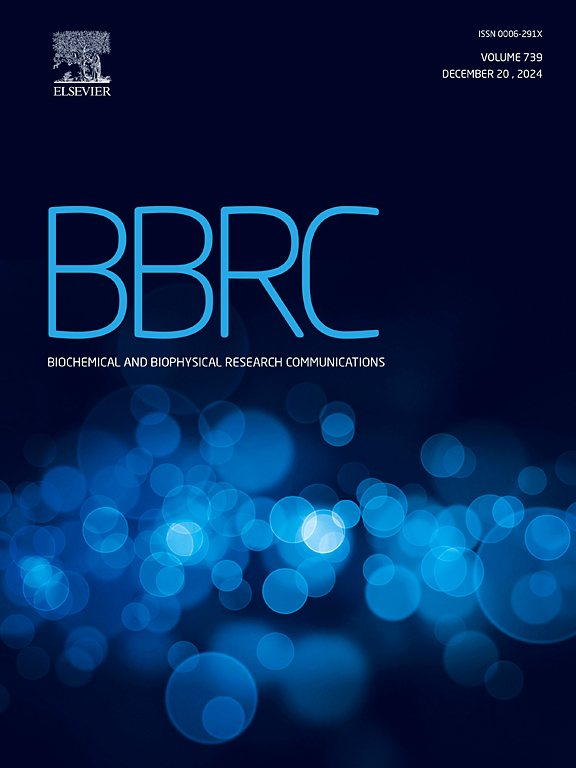miR-216a-3p alleviates primary Sjögren's syndrome by regulating the STAT1/JAK signaling pathway
IF 2.5
3区 生物学
Q3 BIOCHEMISTRY & MOLECULAR BIOLOGY
Biochemical and biophysical research communications
Pub Date : 2025-03-17
DOI:10.1016/j.bbrc.2025.151647
引用次数: 0
Abstract
Background
Sjögren's syndrome (SS) is a chronic systemic autoimmune It chiefly impacts the exocrine glands, specifically the salivary and lacrimal ones, causing manifestations such as dry mouth and eye. Sjögren's syndrome often coexists with other autoimmune diseases, making it difficult to study its pathogenesis. Mounting evidence suggests that microRNAs (miRNAs) play a pivotal role in the development of autoimmune diseases, yet the precise mechanisms underlying their involvement in SS remain to be fully elucidated.
Methods
A cohort dataset pertaining to Sjögren's syndrome was procured from the Gene Expression Omnibus (GEO) database and subsequently analyzed using bioinformatics tools. The association between Signal Transducer and Activator of Transcription 1 (STAT1) and Sjögren's syndrome is well-established. To predict miRNAs targeting STAT1, we utilized the TargetScan database, focusing on miR-216a-3p. Furthermore, to model primary Sjögren's syndrome (pSS) in vivo, we employed a rat model established through submandibular gland protein immunization. These pSS model rats were then subjected to injections of either miR-216a-3p mimics or inhibitors. Subsequently, histological analysis was conducted to assess the resulting tissue morphology. Quantitative real-time reverse transcription polymerase chain reaction (qRT-PCR) was employed to determine the expression levels of both STAT1 and miR-216a-3p. Cytokine levels were quantified using enzyme-linked immunosorbent assay (ELISA). To investigate the protein expression of key components of the STAT/JAK signaling pathway, Western blot analysis was performed, targeting Signal Transducer and Activator of Transcription 1 (STAT1), Janus kinase 1 (JAK1), and Janus kinase 2 (JAK2).
Results
Our findings indicate that miR-216a-3p exerts regulatory control over the JAK/STAT signaling pathway by modulating the phosphorylation of STAT1, thereby attenuating the severity of primary Sjögren's syndrome in our model. Moreover, miR-216a-3p was observed to inhibit the secretion of pro-inflammatory cytokines and mitigate B cell hyperactivation. These results collectively suggest a potentially significant role for miR-216a-3p in the pathogenesis of autoimmune diseases, warranting further investigation.
求助全文
约1分钟内获得全文
求助全文
来源期刊
CiteScore
6.10
自引率
0.00%
发文量
1400
审稿时长
14 days
期刊介绍:
Biochemical and Biophysical Research Communications is the premier international journal devoted to the very rapid dissemination of timely and significant experimental results in diverse fields of biological research. The development of the "Breakthroughs and Views" section brings the minireview format to the journal, and issues often contain collections of special interest manuscripts. BBRC is published weekly (52 issues/year).Research Areas now include: Biochemistry; biophysics; cell biology; developmental biology; immunology
; molecular biology; neurobiology; plant biology and proteomics

 求助内容:
求助内容: 应助结果提醒方式:
应助结果提醒方式:


